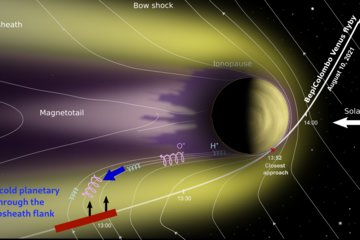All genres
21.
Journal Article
Generalized magnetohydrodynamic equations for partially ionized dusty magnetoplasmas. Physics of Plasmas 3, pp. 3564 - 3572 (1996)
22.
Journal Article
Nonlinear fluid equations for low-frequency phenomena in partially ionized dusty magnetoplasmas. Physica Scripta 54, pp. 625 - 626 (1996)
23.
Journal Article
Modifications of the electrodynamic interaction between Jupiter and Io due to mass loading effects. Journal Geophysical Research 101, pp. 24943 - 24954 (1996)
24.
Conference Paper
Magnetic communication scenarios for close-in extrasolar planets. In: Status and prospects for hot Jupiter studies, Haute Provence Observatory Colloquium, August 22-25, 2005, pp. 1 - 8. (2005)











